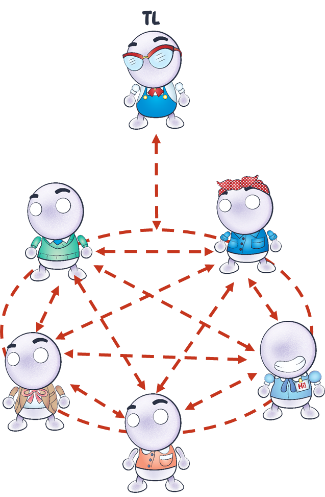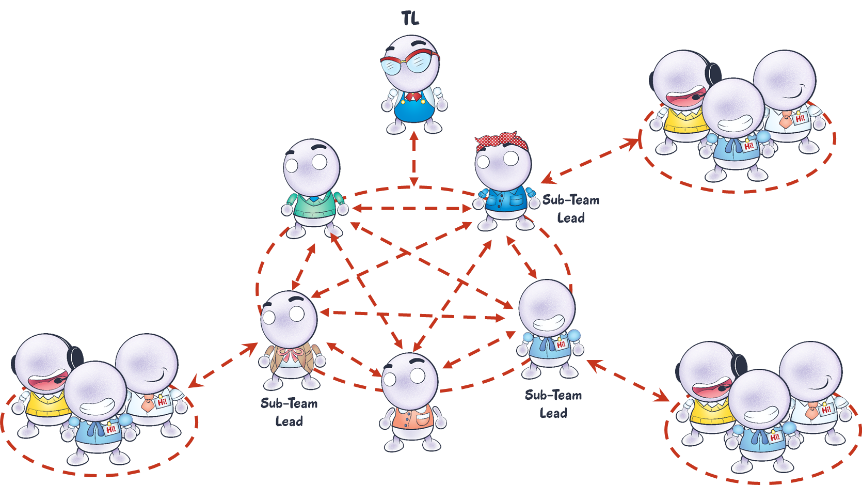Matrix Management Wiki
Home » The Structure Key » 3G. Team Structure
- 3G1. The team is the primary unit of structure in a matrix.
- 3G1i. Most teams exist in the horizontal dimension.
- 3G1ii. The primary reason for having teams is to manage interdependencies.
- 3G2. The ideal team size is six to eight people.
- 3G2i. There should be no more than 10 people on a team.
- 3G2ia. If a team needs to be larger, structure the team into tiers: the main team and subteams.
- 3G2ii. The reason team size should be 10 or less is that as the size of the team grows, the number of interfaces that need to be managed increases exponentially.
- 3G2iia. If three people are on a team, there are six relationships; each person manages two relationships.
- 3G2iib. If six people are on a team, there are 21 relationships total; each person manages five relationships.
- 3G2iic. If 10 people are on a team, there are 55 relationships total; each person manages nine relationships.
- 3G3. Teams of 10 people or less consist of a main team only.
- 3G3i. Figure 3.3. Diagram of the main team.

- 3G3ia. The main team manages the interdependencies between members of the team.
- 3G4. Larger teams (of over 10 people) have a main team plus a subteam structure.
- 3G4i. Figure 3.4. Diagram of the main team and subteams.

- 3G4ii. The main team consists of a team leader and team members who may or may not also be subteam leaders.
- 3G4iia. The main team manages the interdependencies between subteams.
- 3G4iii. Subteams are composed of a subteam leader and subteam members.
- 3G4iiia. The subteams manage the interdependencies between subteam members.
- 3G4iv. The larger the team, the more coordination is needed to manage the “whole” of whatever needs to be accomplished.


